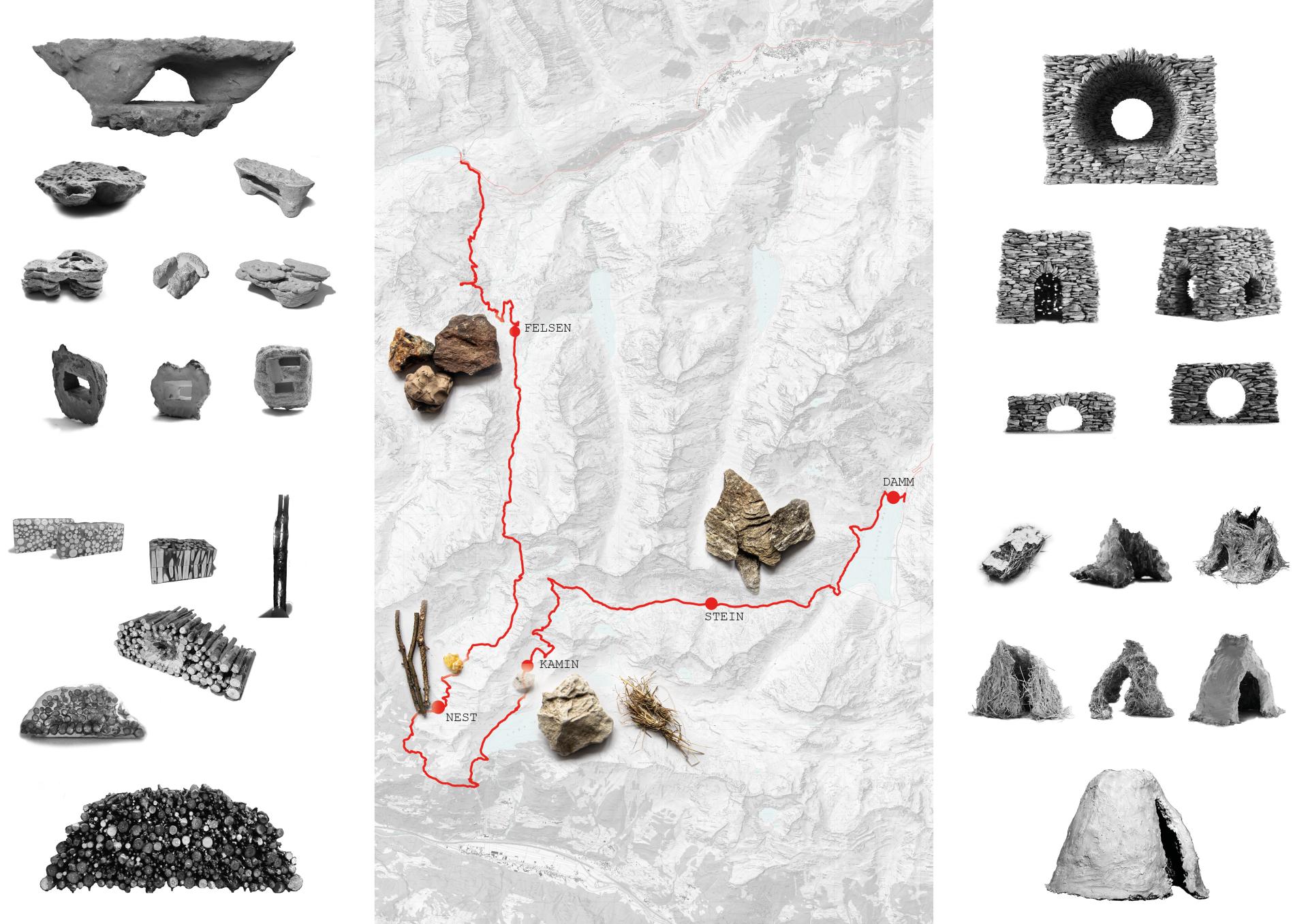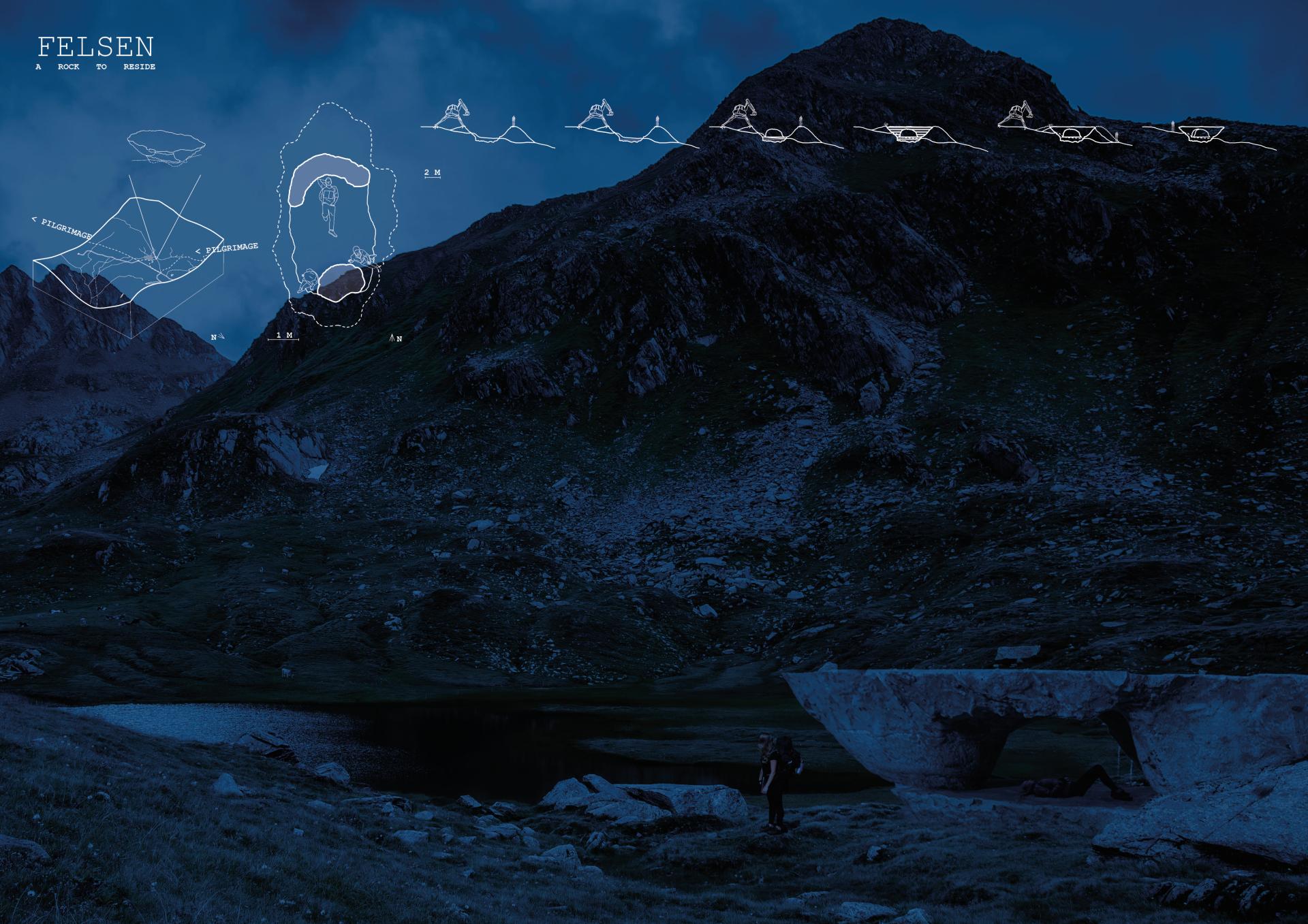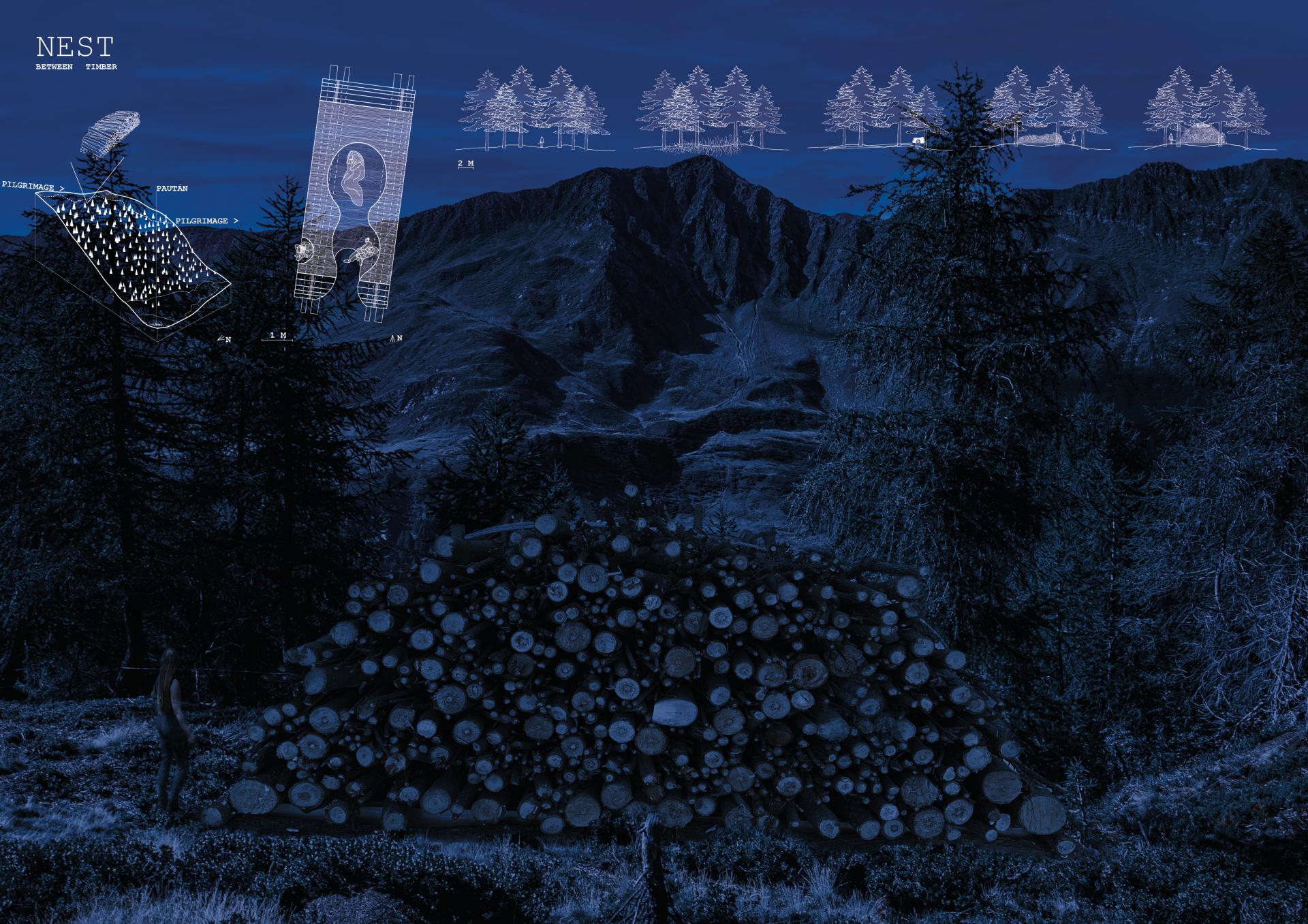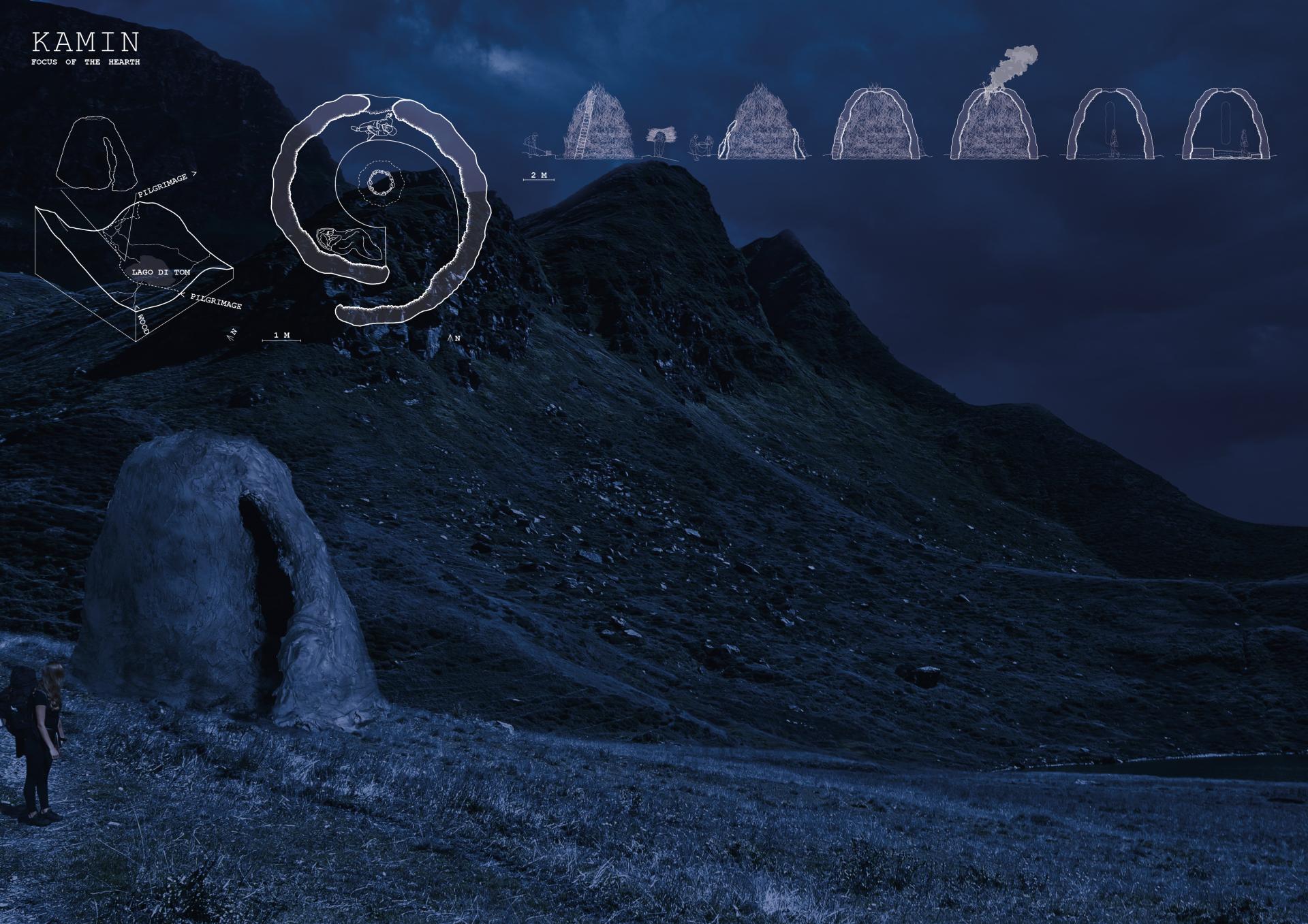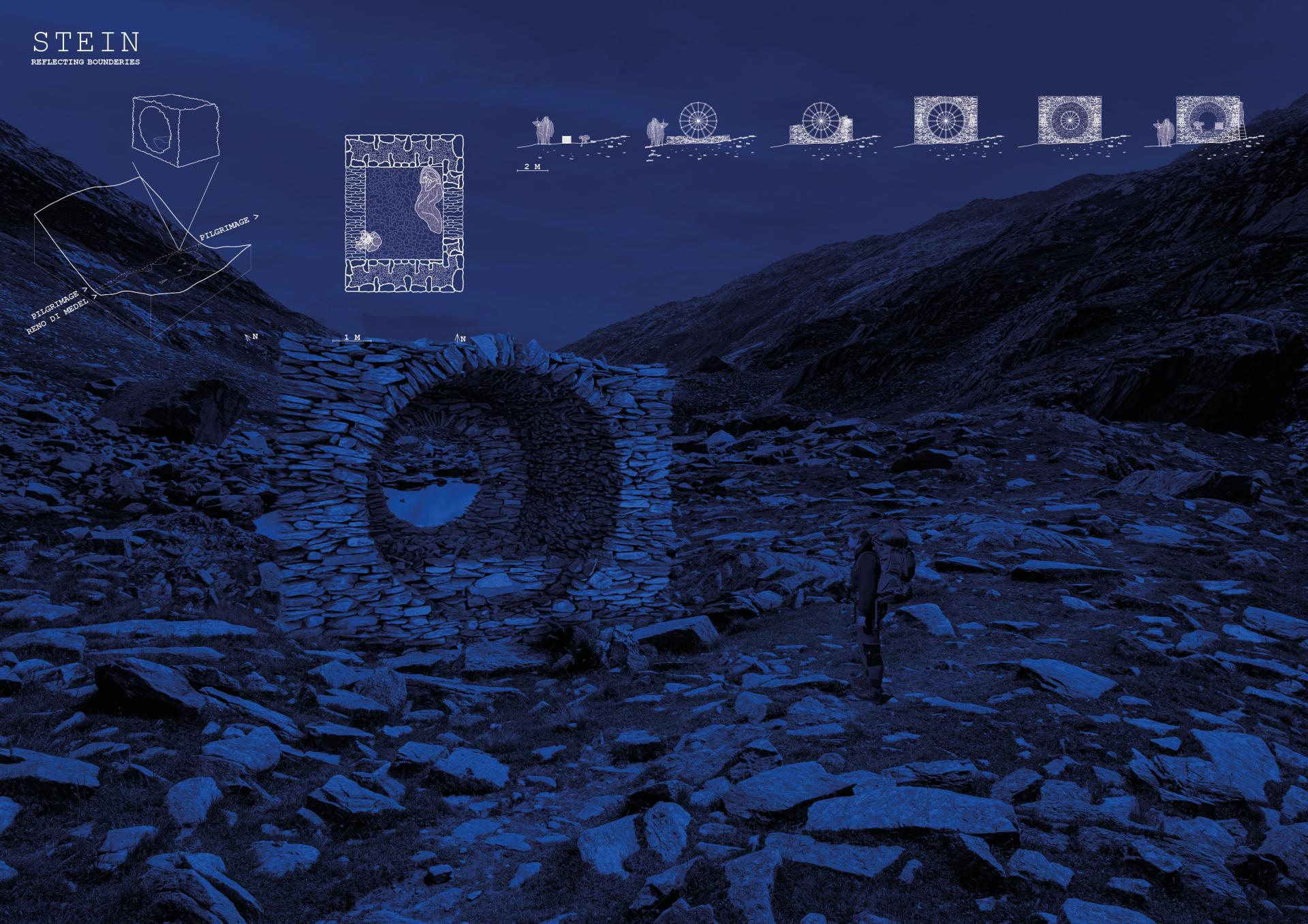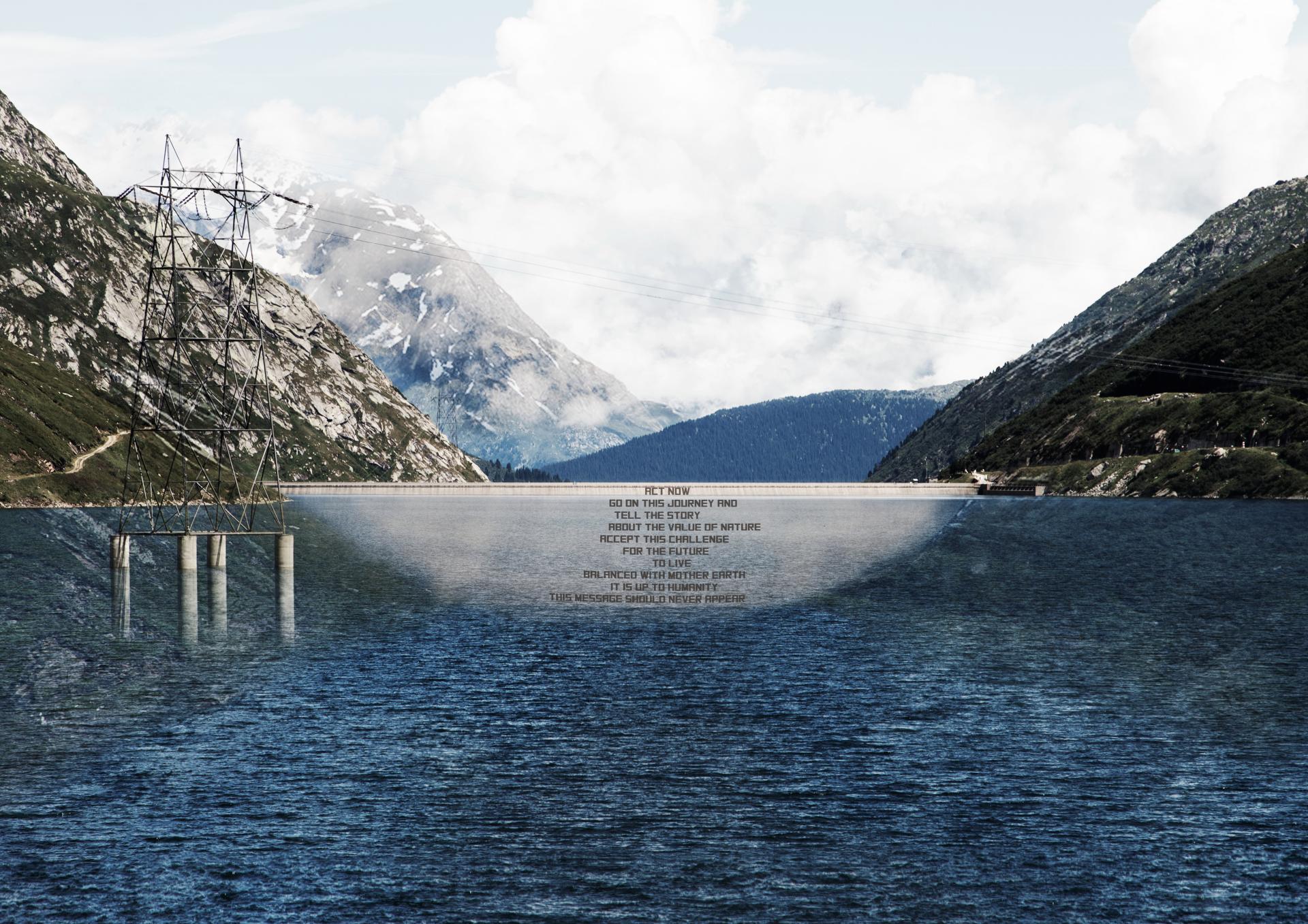Pilgrimage “research to the source”
Basic information
Project Title
Full project title
Category
Project Description
Pilgrimage is the circular design of a 5-day trekking tour in the Alps, the design of 4 mountain shelters and a manifesto. The shelters are made from raw materials like stone, wood and lime, which are found on the place where the shelters are built. The aim of the tour is to reconnect hikers with nature, and make them aware of the nondestructive use of natural resources and the need for nature conservation. The tour ends with a manifesto to stop global warming, carved out in the wall of a dam.
Geographical Scope
Project Region
Urban or rural issues
Physical or other transformations
EU Programme or fund
Which funds
Description of the project
Summary
Pilgrimage “research to the source” is a 5-day hiking tour through the Alps. The project consists out of 5 interventions along the trail. Four shelters where architecture creates a symbiosis between man and nature. The fifth design at the end is a manifesto carved out of the existing dam. A dam may seem sustainable and provide for electricity, but it also destroys ecosystems. It brings harm to nature only to provide for a small part of human existence. The destruction of nature should stop: ACT NOW!
The project’s aim is to renew the connection between man and nature. The depletion of natural resources and degradation of natural ecosystems has caused global climate change. In this specific area most of all glaciers will have disappeared around 2030 and pose a serious threat to the alpine ecosystem. For this reason, the relationship between man and nature should be redefined, reorganized and re-experienced. We should let go of the self-centered human perspective and think of the whole earth as a system in which humans are just a small part. The trekking tour makes wanderers aware of the importance of the conservation of nature.
The architecture of the 4 shelters along the trail, reinforces this goal. Usually, architecture entails the transformation of raw materials into building materials, a manufacturing process which causes carbon emissions. Also the transport to the building site causes carbon emissions. In this project, however, only raw natural materials like stone, lime, wood and plants are used, which are already present on the ‘building site’. These circular materials are collected on the spot and used as they are, so no polluting manufacturing process or transport is required to build the shelters. Compared to the recent building process, this is a nature friendly way to build. Materials are used nondestructive and return into landscape over time. Architecture should be like a footprint of a wanderer in the landscape that will disappear as time passes by.
Key objectives for sustainability
The key objective of the project is to renew the connection between man and nature in a sustainable way. By enabling wanderers to make a 5-day long trekking tour, and sleeping at night in sustainable shelters, built with local, unmanufactured circular materials, increasing awareness of the importance of nature conservation is created, and a nondestructive way of dealing with the natural environment is promoted. Moreover, the slow pace of hiking enables people to become one with nature, and makes them experience the rejuvenating force of nature, while simultaneously showing them the beauty of the natural scenery. This slow and balanced pace of hiking is introduced into the building method in order to make the shelters become one with nature as well. It is important to stop using the planet and start the conversation with nature. It develops a new vernacular in which an architect is building with nature and not in nature.
In architecture the relationship with nature has always been a topic (remember i.e., Frank Lloyd Wright’s Fallingwater), but this project is exemplary because only local building materials on the site are used for the construction of the shelters. The building process doesn’t cause pollution as a consequence of the manufacturing, assembly and transportation of building materials, and the buildings consist of completely circular, natural materials. This is not (yet) common practice in architecture and still is quite unique. To find out more about the specifics of the design and the building methods a complete presentation of the project in English may be read at this location:
https://issuu.com/n0warchitecture/docs/report_ingekort
Please choose the full screen option in the window to be able to read the text.
The added photo's show the design of the 4 shelters by night and the manifesto on the dam.
Key objectives for aesthetics and quality
The design of the hiking tour is not primarily aimed at functional goals. It goes beyond daily live and asks the wanderer what it means to be human. The absence of human interference becomes rare in the European landscape. Building in this fragile landscape asks for a balanced and humble aesthetics of the design. In the bigger picture the designs are almost invisible, but when a wanderer comes close enough to the shelters the design scales to human proportion. In this way the design is the key in the conversation of how to reconnect man with nature. This type of architecture embraces the enormous scale of the landscape as the tiny human scale as well.
With this objective the trekking tour creates awareness of our relationship with nature through multi-sensorial experience. An important part plays viewing the beauty of nature from different angles and perspectives. Also the use of natural building materials shows the aesthetics of pure, raw materials. The aesthetics of this experience is even further enhanced by the beautiful design of the natural shapes of the shelters. The shelters are designed to feel at home in their surroundings. They belong there and are still part of the natural landscape. Also the positioning of the shelters in the landscape is such that interesting views are created on the surroundings. The trail, as well as the design of the shelters, are primarily aimed at experiencing the aesthetics of a balanced fulfilling live, for both our planet and ourselves.
Key objectives for inclusion
The project responses on different aspects according inclusivity. It is a new route hiking on existing trails who are open to anyone and free of charge. Staying overnight in the shelters is also free. It is a project responding to its context. This hopefully gives the whole area around the 42,3 km long route more purpose. Giving purpose to a place like this can be an incentive to protect this area better in the future to keep the route alive. This concept is already working for hundreds of years for many pilgrimages around the world.
In the analysis during the research the project focusses on local possibilities. Because of the vernacular architecture with local materials the shelters can be built with local people. They can be taught during this project how to build in a sustainable way with the materials in their area. It would be a dream if this pilgrimage can be a step forward for the whole community around the route to start thinking more balanced and sustainable. In this way the local inhabitants will feel more connected to the plan and the site, and will feel more responsible to conserve the construction and maintain the condition of the shelters.
Embracing nature is a religion on its own, something we can all relate to. We all need this earth to live, and we all benefit from a better and more balanced understanding of this relationship. This is an inclusive and exemplary message for all mankind, and this pilgrimage communicates this message.
Physical or other transformations
Innovative character
The hiking route, and the design and construction of the shelters, combine sustainability, the experience of nature, aesthetic design and social inclusion. The trekking tour is open to anyone and is free of charge. The shelters alongside the trail are made of natural, circular materials, which already are present in the mountain area. The route shows the beauty of the landscape as well as the aesthetics of natural raw materials, and the beautiful organic design of the mountain shelters. All this creates a unique experience of living and building in balance with nature, an experience which reconnects man with nature in a sustainable way. This is an inclusive message, which concerns all mankind.
The approach of this project is exemplary because it gives a universal message, which may be realized anywhere in the world. The concept to design a trekking tour through nature, and to build circular shelters in a sustainable way with raw materials, which are found on the spot, can be done anywhere. Promoting nature conservation and awareness of global warming in this way is a universal concept, which benefits our whole ecosystem, not just humans, but also helps to preserve our natural resources, plants and animals.

